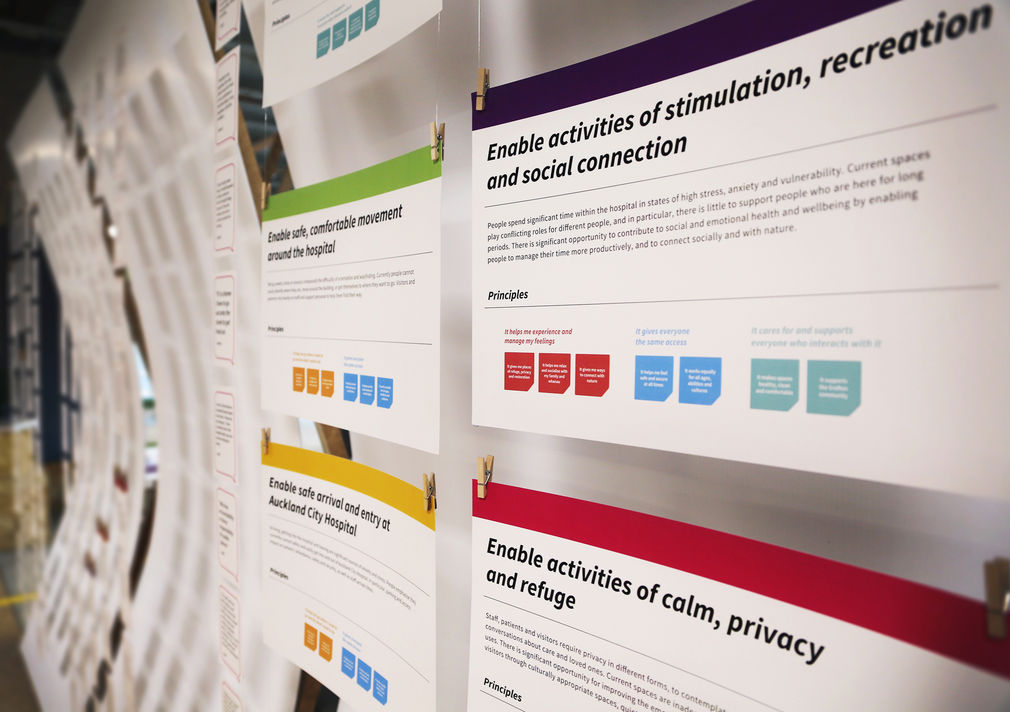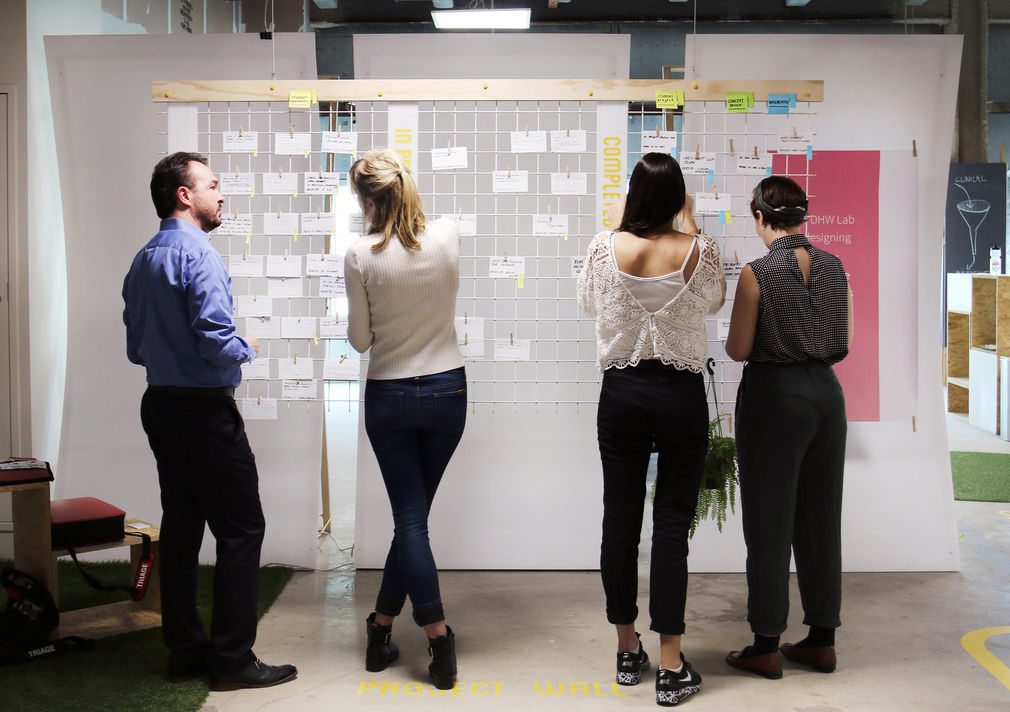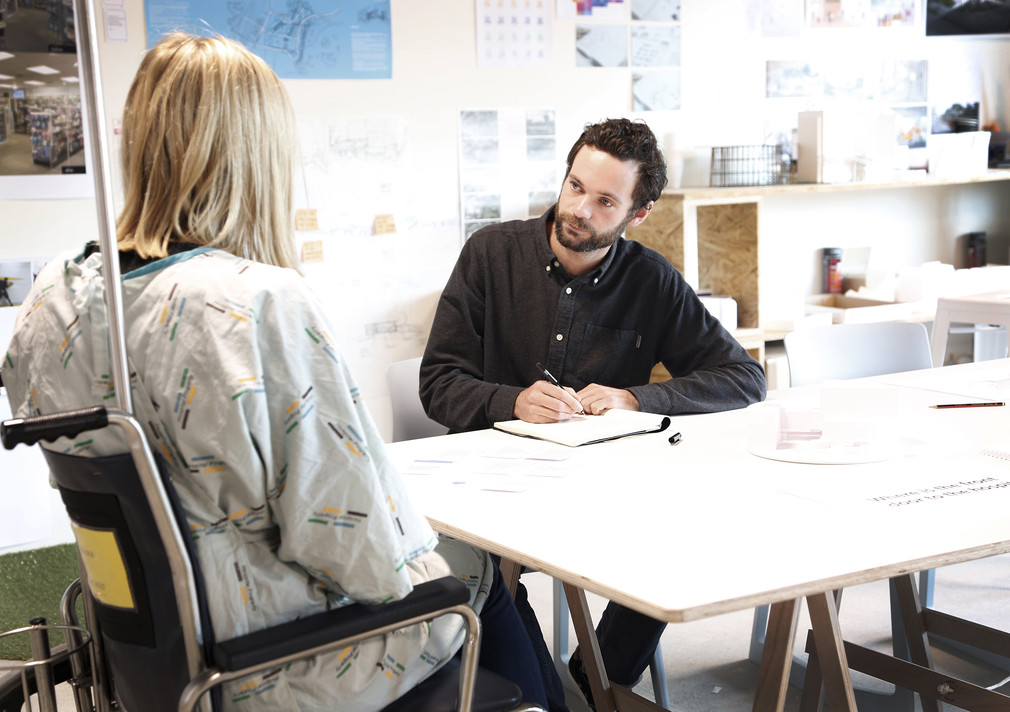At first glance, the design and healthcare industries couldn't be more different. Design is perceived as fluid, open-ended and intuitive, while the healthcare profession seems far more precise, objective and scientific. The innovative Design for Health and Wellbeing (DHW) Lab at Auckland City Hospital brings the two paradigms together in a studio space set up for collaborative and co-design processes. Together, the two organisations are exploring how health and wellbeing can be enhanced for the good of all hospital users when multiple voices are guided by design-thinking.
Purple Pin Case Study — Public Good
DHWLab / AUT / Auckland DHB
Designing Better Healthcare Experiences
Background



The Lab is a collaboration between AUT's Faculty of Design and Creative Technologies and the Auckland District Health Board's (ADHB) performance improvement programme. It was initially established to give students and design researchers real-world health and wellbeing projects, while providing the ADHB an in-house design think-tank. Everyday products, services, systems and experiences are benefiting from the creative thinking this programme has stimulated, and the close collaboration that is occurring between designers, medical staff and patients.
Human-centred design and co-design are the foundation of the Lab's activities, in which patients and families participate in the design process to provide critical insight and feedback at key stages of design development. The Lab states that it is “guided by the belief that the user's voice is integral to a meaningful design outcome, since the intimate knowledge they have of a given service, product, or space - how it looks and feels to them - is key to meeting their needs and improving their experience. … Thus the value of design reflects real needs rather than assumed needs.”
The fact that the Lab is on site at the hospital has been a key part of its success.
The shared studio - complete with meeting areas, working areas, 3D printers and copious pin boards - is easily accessible to patients and hospital staff. AUT researchers from all disciplines (including undergraduate, postgraduate and academic staff) set up in the space on a project-by-project basis, and with the freedom to experiment and innovate they meet with hospital users to explore real solutions to real problems.
From a practical point of view, improved processes and products have had a tangible and positive impact on a range of projects and environments, with staff appreciating the opportunity to look at problems from various new design perspectives. From an academic point of view, AUT is advancing applied and theoretical research in new ways, and educating students in a dynamic, multi-disciplinary and real-world context.
From industrial design to communications design to process design, researchers are assisting positive change in a range of everyday healthcare experiences. Whether it be co-designing software with and for dementia patients, producing a more engaging IV pole for children, or designing new way-finding solutions, the programme's potential is wide-ranging.
Mapping patient pathways has offered fertile ground for research. In the Emergency Department, for example, new visual communication tools have been developed to translate a sophisticated whole - a complex service, its procedures and priorities - into new diagrams, letters, on-site graphics and a concept for a digital dashboard, all geared to making the service more intuitive and understandable, and reducing stress and frustration within the space. Sometimes this mapping can become a starting point for identifying service improvement opportunities.

In the entry, one photo in particular caught the judges' imagination: “the picture of a woman in a hospital gown and wheelchair, complete with drip, sharing her experiences with a researcher. Getting the permission and creating the conditions to do system-level change that will make a vital public service more human, more effective and more affordable is hard, and brave. We couldn't go past this example of design in action, for the good of us all.”
The scope and scale of the DHW Lab's projects at Auckland City Hospital are continuing to grow. Each project, whether it is addressing parking issues or improving product design, is a human-centred collaboration that aims to make the healthcare environment more welcoming, safe, and intuitive for a wide community of users.
—Andrea Stevens
www.folio.nz